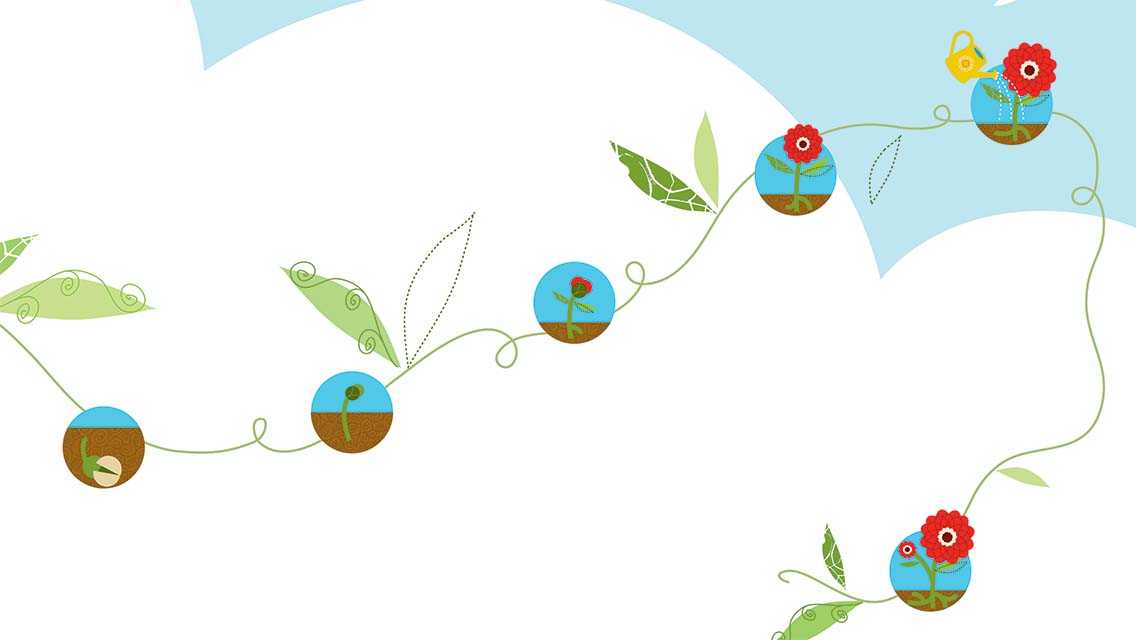We’re all pretty good at identifying our flaws. How often do you catch yourself thinking, “Ugh! I’m so bad at _______” or “Well, _______ just isn’t my strong suit.”
Now stop and fill in these two sentences: “I’m great at ______ !” and “My strengths include ______ , _______ , and _____ .”
Trickier, isn’t it?
Identifying our strengths is tough enough, but playing to them is even tougher. Why? According to Marcus Buckingham and Donald O. Clifton, PhD, authors of Now, Discover Your Strengths, it’s because we have so much practice thinking about, and trying to fix, our weaknesses. Most of us were taught at a young age to identify the things we didn’t do so well (a school subject like spelling or math, for example), and then to work hard to improve them (Extra study? A special tutor? Summer classes?). We’ve spent so much time fixing our flaws, in fact, that one of our weaknesses became an inability to recognize our natural strengths.
Now Buckingham and Clifton, as well as other experts in the fields of positive psychology, think it’s time to reverse gears and begin paying attention to our strengths. We won’t ever find success and satisfaction when working to “stop-gap” our weak areas, they assert. Instead, “each person’s greatest room for growth is in the areas of his or her greatest strength.”
By focusing on identifying, practicing and refining our strengths, they argue, we wind up becoming “more productive, more fulfilled and more successful” in the endeavors that matter to us most.
Identifying Strengths
Before we can build on our strengths, though, we have to be able to identify them. For most of us, with our internal lenses so well trained on our weaknesses, this process takes some practice. Buckingham and Clifton suggest we ask ourselves the following questions to root out our strengths:
What activities do I most enjoy? What activities bring me the most satisfaction?
Often, say Buckingham and Clifton, the activities at which we excel are also the activities we most enjoy. That’s primarily because of the way our brain develops.
From birth through age 3, our developing brains make trillions of synaptic connections. But we can’t sustain all of them at full strength into adulthood. Indeed, the brain is designed to abandon half of its synaptic network in its first 15 years as a way of focusing itself on each individual’s strongest neural connections.
As Buckingham and Clifton put it, “It is not true that the more synaptic connections you have, the smarter you are or the more effective. Rather, your smartness and your effectiveness depend on how well you capitalize on your strongest connections. Nature forces you to shut down billions of connections precisely so that you can be freed up to exploit the ones remaining.”
Think of the strength-development process as circular: Genetic inheritance and childhood experiences determine how easily an individual is drawn to these remaining neural connections – which may spark everything from a tendency toward competitiveness to a talent for strategic thinking. And the stronger the draw to these connections, the more enjoyable the experience of using them – and when we enjoy an activity, the more we do it, which, in turn, makes the connection stronger still.
“Nature and nurture reinforce some connections and allow billions of others to fade away,” Buckingham and Clifton explain. “And so you emerge – a distinctly talented individual blessed and/or cursed to react to the world in your own enduringly unique way.”
In short, we get better at what we like to do, and we like to do the things we’re good at.
To pinpoint the activities you really enjoy, start by paying attention to how your level of engagement ebbs or wanes as you go through your day. Notice, in particular, those activities in which you become so engrossed that you seem to lose all track of time – a state that psychologist and author Mihaly Csikszentmihalyi, PhD, describes as “flow.” When you find yourself in this state, it’s likely you are drawing on a source of personal-strength.
Next, ask yourself some questions:
What activities do I learn rapidly and master with the least effort?
Strengths have an “I can’t help it” quality to them, in that the required skills and inclinations come naturally. This is a function of the deeper neural connections we form around our areas of interest and strength, explain Buckingham and Clifton. The more intricate and established our neural circuitry in a certain area, the easier we are likely to pick up those skills.
What are my spontaneous reactions to situations I encounter? How would I feel about doing this activity again?
When you’re in a new situation, and you don’t find yourself in a state of “flow,” pay attention to your thoughts and emotions. Are your eyes glazing over? Are you gritting your teeth or watching the clock? As Buckingham and Clifton note: “If all you are thinking about is . . . ‘When will this be over?’ – more than likely you are not using a talent. But if you find yourself . . . anticipating the activity – ‘When can I do this again?’– it is a pretty good sign that you are enjoying it and that one of your strengths is in play.”
Strengths at Work
A strengths-based approach benefits organizations and businesses, too. In the book, 12: The Elements of Great Managing, authors Rodd Wagner and James K. Harter, PhD, analyzed a recent Gallup survey and found that “organizations focused on maximizing the natural talents of their employees increased engagement levels by an average of 33 percent per year, equating to an average net gain of $5.4 million in productivity per organization.”
The writers continue: “For all the evidence that this approach is good for business, only about one in three employees can strongly agree that they ‘have the opportunity to do what they do best every day.’ The amount of money left on the table is staggering. Businesses agonize over marketing plans, inventory strategies, labor models, and new product introductions in search of one or two more points of profit. Few of them realize part of the answer is so close to home.”
A strengths-based approach can also help individuals find more satisfaction and success in their careers. Investor-extraordinaire Warren Buffet, for instance, doesn’t have the impatient manner or the skeptical nature that today’s stock market seems to demand of serious players. But rather than viewing his tendency toward pragmatism, patience and trust as a weakness, Buffet recognized these traits as strengths – and focused on them to build one of the world’s most successful investment firms.
“Like many people who are both successful and fulfilled, he found a way to cultivate the strengths he did possess and put them to work” in his chosen field, write Buckingham and Clifton. “For example, he turned his natural patience into his now-famous ’20-year perspective’ that leads him to invest only in those companies whose trajectory he can forecast with some level of confidence for the next 20 years. His practical mind made him suspicious of investing ‘theories’ and broad market trends. . . . Finally, he put his trusting nature to good use by carefully vetting the senior managers of the companies in which he invested and by stepping back and away, rarely interfering in their day-to-day operations of the business.”
“Danielle” (not her real name), a successful journalist Buckingham and Clifton interviewed as part of their research, employed one of her strengths – a sense of empathy – to create great interviews. But when she realized her journalism career was less than fulfilling, she shifted her attention to a career as a therapist working in a hospice, where she believed she could make more of a difference in peoples’ lives. By shifting careers, she didn’t abandon her strengths. She merely put them to work in a different field where they were equally valued, just utilized differently.
“Despite the fact that the knowledge and skills she was now employing were dramatically different,” they write, the same keen sense of empathy “drove her behavior and helped her excel.”
Strengths and Authenticity
Whether we play to our strengths to find more success and fulfillment at work, in our hobbies or in our relationships, we are embracing a process that encourages us to become more self-aware and authentic.
Indeed, once you acknowledge your strengths, a strange transformation occurs: Those around you begin to see you as a more confident, productive and effective person.
As Buckingham and Clifton put it, “What looks on the surface like transformation is actually acceptance of some things that can never be transformed – talents. We don’t change. We simply accept our talents and refocus our lives around them.”
Values in Action
Psychologists Martin Seligman and Christopher Peterson, PhDs, of the Values in Action Institute, have outlined six general human virtues – wisdom, courage, justice, humanity, temperance and spirituality – that can help us determine our personal strengths. The six virtues are broken down into 24 “strengths of character,” such as creativity or integrity, which fall into the virtue categories. They suggest that when we know our top strengths of character, we can better hone in on them and tap into the greater success and fulfillment of the strengths-based life.
Discovering your strengths doesn’t have to be complicated: The authors have developed a 240-question survey that analyzes individual strengths and highlights each persons’ top five, based on the six virtues and 24 character strengths. While the authors caution that the survey is still being assessed and tweaked as an academic tool, it can be helpful in providing personal insight into your character strengths. The survey is free and available online, and the results are calculated immediately after finishing the test.
Take the test at www.viastrengths.org and learn more about positive psychology, the Values in Action Institute and your own strengths of character.




This Post Has 0 Comments